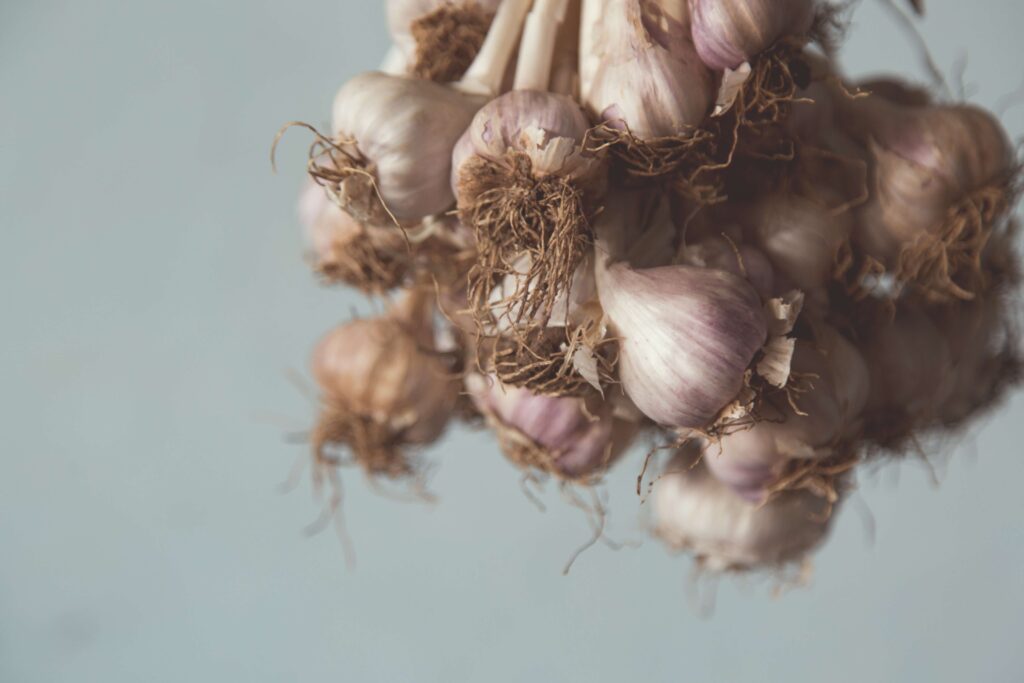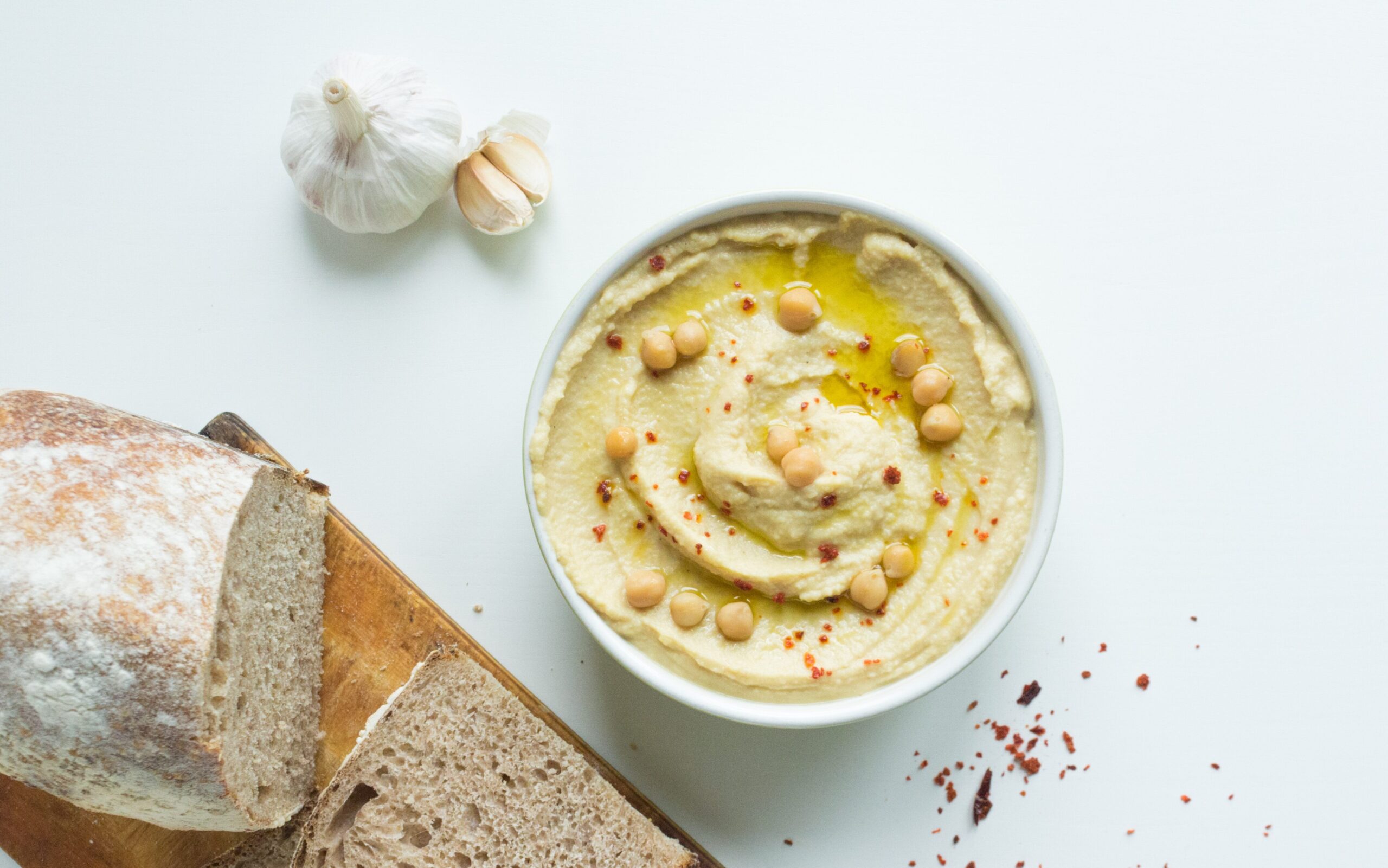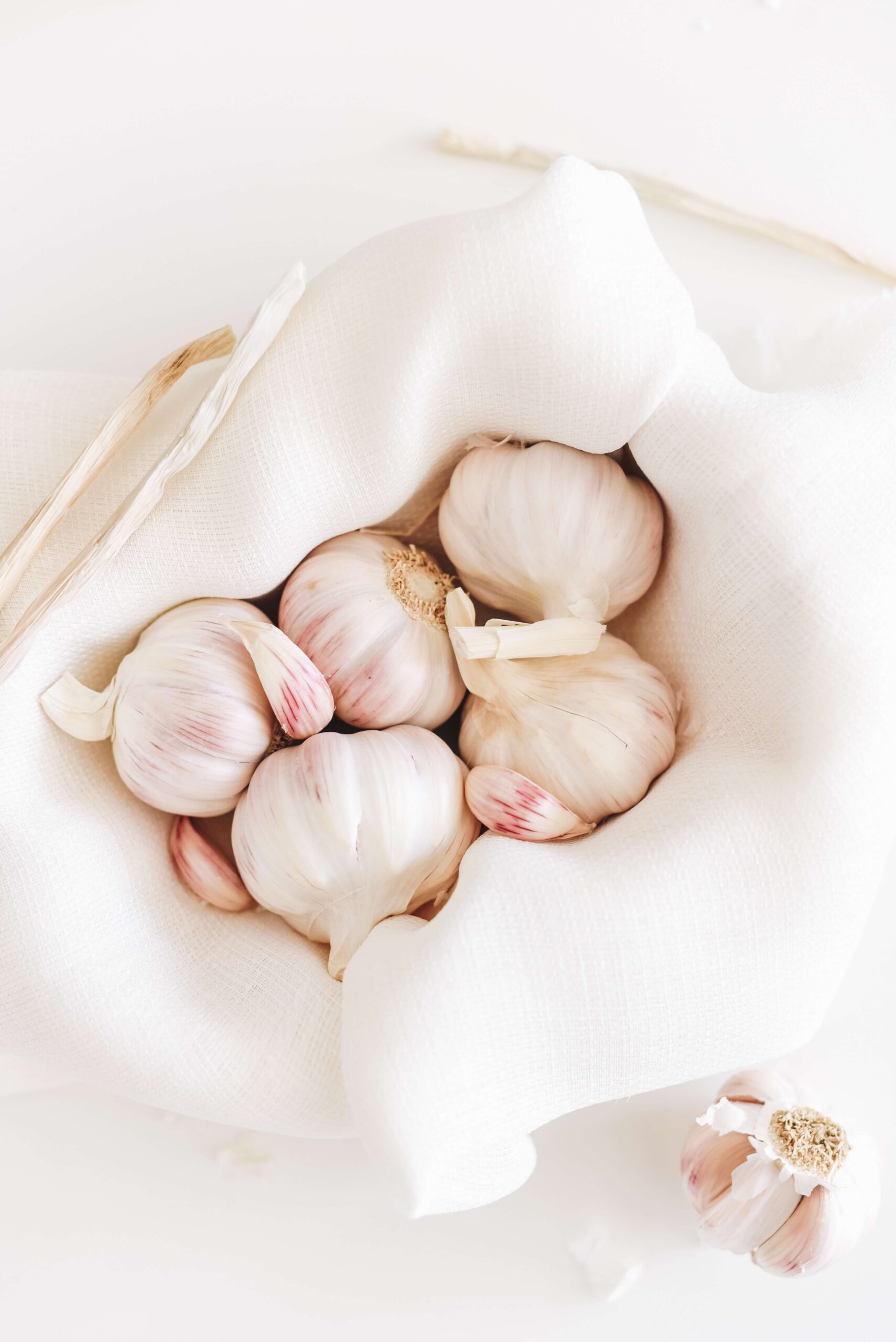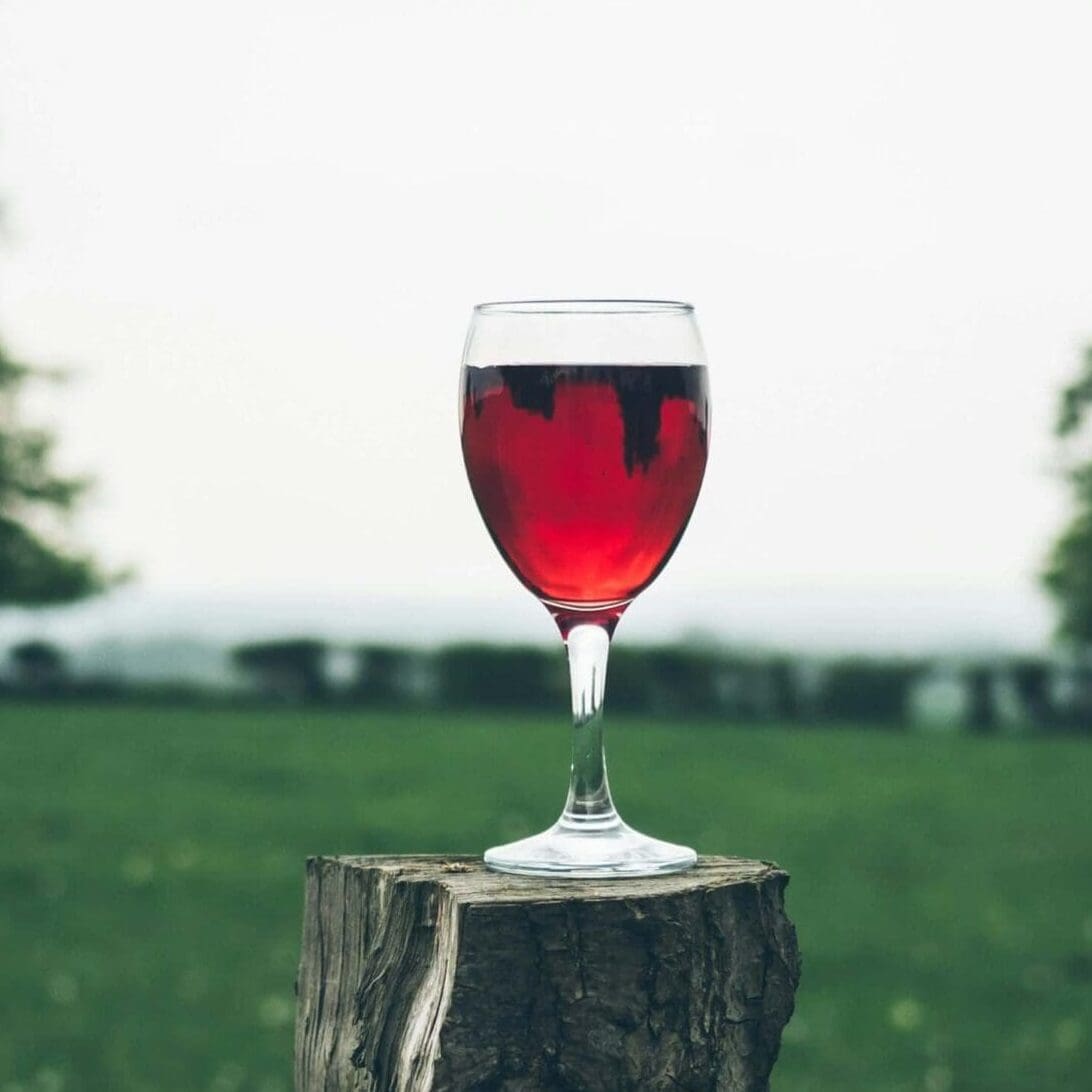
Garlic Introduction
Hello friend,
If you take the garlic amount in the recipe as more of a suggestion and end up doubling or tripling the amount, then this post is for you. That’s right, this vegetable has been studied for its potential to reduce the risk of certain cancers.
Now if you have spent any amount of time following me, you know that I don’t really promote superfoods – the idea that one food/herb/tea will cure or totally prevent cancer or any disease. Having said that, I do recognize that many foods are packed with wonderful compounds that can be implemented as part of a healthy diet. In other words, let’s focus on what we can ADD to our plates to reap even more benefits from our food. Let’s do this! Wahoo!
Background
Garlic originates in central Asia and grows wild in regions of France and Italy. Due to international trade, it has gradually spread all over the world and is a staple in numerous cuisines. Along with providing a strong, pungent flavor to recipes, garlic also had spiritual, medicinal, and even supernatural uses (warding off vampires).
Garlic and Cancer
Cell and Animal Studies
When garlic is crushed or sliced, a compound called allicin is produced. Allicin then forms other compounds, which could play a role in cancer prevention. In cell and animal studies, these resulting compounds have the following effects:
- Turn on genes that suppress tumors
- Prevent enzymes that turn on cancer-causing materials
- Activate enzymes that destroy carcinogens
- Help repair damaged DNA
- Slow the growth of cancerous cells
- Increase self-destruction mechanism for damaged cells
- Limit cancer’s ability to develop blood vessels
Human Studies of Garlic Consumption
According to the American Institute for Cancer Research, much of the data looking at human consumption of garlic and cancer risk comes from observational studies called case control studies. These studies compared the diets of those who have cancer with the diets of those who do not. Based on the results of these studies, diets high in garlic may be associated with a lower risk of colorectal cancer. Other studies have shown mixed results. One study following individuals for 6-20 years showed that there was not a significant association between garlic consumption and colorectal cancer risk. Other studies linked higher consumption with a lower risk of esophageal, pancreatic, breast, endometrial, and prostate cancer.
Although the observational data is not strong enough to form definite recommendations, it can guide future research. Small clinical trials testing the effect of a single garlic rich meal (about 1.5 teaspoons) showed that garlic compounds activated self destruction of abnormal cells. It has also been shown to decrease certain inflammatory markers. Despite all the research, several questions remain:
- How well do people absorb the active compounds?
- How can we increase the bioavailability of these compounds to reap benefits?
- How much garlic needs to be consumed to get a therapeutic effect?
Other Health Benefits
- May help to reduce the common cold – A study with 106 volunteers broken up into two groups receiving garlic showed that the experimental group had 63% less colds compared to the placebo group.
- May reduce Blood pressure – high intake of garlic (about 4 cloves daily) can help to lower blood pressure and may even be used instead of or along with blood pressure lowering medications. It may be a good idea to talk to your doctor if you are on such medication before drastically increasing your intake
- May help to lower bad (LDL) cholesterol
- Protect against neurodegenerative diseases such as Alzheimer’s due to antioxidant content
- May help to increase athletic performance
- Reduce the risk of viral, bacterial, and fungal infections
Preparation Tips
When preparing garlic, make sure you let it sit for about 10 minutes after chopping or crushing before adding it to heat. This allows time for an enzyme to produce allicin, the source of the bioactive compounds that are linked with health benefits.
How to Add More Garlic to Your Diet

- A recipe calls for 1 or 2 cloves? Use more
- Add roasted garlic to soups, sauces
- Make garlic bread
- Try different cuisines that use garlic as a staple such as Asian and Mediterranean
- Spice up your vegetable sides by adding sauteed garlic to: spinach, brussels sprouts, carrots, broccoli, kale, etc.
- Mix in with homemade salad dressings
- Add to marinades for your meat/proteins: chicken, steak, tofu, shrimp, etc.
- Sautee with lemon and olive oil for a simple pasta sauce
- Add to rice, quinoa, barley, or other grain
- Make homemade hummus
- Add to a cold Mediterranean salad with beans, feta, tomatoes, and avocado
- Add to roasted chickpeas
- Add to roasted vegetables
Grilled Zucchini & Chickpea Pasta Salad
The weather is getting warmer and many of us are exchanging our warm comforting soups for cool salads. You can still pack in antioxidant-rich garlic during the cooler seasons by adding it to dressings, salads, cold dips, and more! Here is one of my favorite recipes that can be made ahead of time and enjoyed at a picnic, part of your meal prep, or as a quick and easy weeknight dinner. Enjoy!
Ingredients
- 4 oz chickpea pasta (dry)
- ⅓ cup of frozen peas
- 1 zucchini (chopped)
- ¼ cup of red onion (sliced)
- 2 tsp of Extra Virgin Olive Oil (divided)
- ½ lemon (juiced)
- 2 garlic cloves (minced)
- Sea salt and black pepper (to taste)
- 2 tbsp of fresh dill (chopped)
Directions
- Cook the chickpea pasta according to the package instructions. In the final five minutes of cooking, add the frozen peas to the pot to cook. Drain everything and set aside.
- Meanwhile, preheat the grill to medium heat. Toss the zucchini and onion with half of the oil. Add to a grill basket and grill until the veggies are slightly charred, about five to seven minutes.
- Mix the lemon juice, garlic, sea salt, pepper, and remaining oil. Toss this mixture together with the pasta, peas, and veggies, and garnish with the dill. Enjoy!
Garlic Bottom line:
Focus on getting lots of plants, herbs, and spices to have flavorful and nutritious meals! Although the link between garlic and cancer is not entirely clear, there is promising research and additional health benefits that come from including more of this pungent vegetable in your diet. Just make sure if you enjoy a garlic rich meal, you share with those around you so everyone has garlic breath!
When it comes to living a cancer prevention lifestyle, there’s a lot of information out there. Unfortunately, this information can be confusing or just plain wrong. The good news is that there is a program that will break down the recommendations into a simple, straightforward manner, so you can become confident once again with your food choices. My Cancer Simplified Membership is the most accessible, affordable way to get my guidance on cancer nutrition and lifestyle. No workbooks, calls, or confusing scientific studies. Just easy advice at your own pace. Click here to join!
References
- Metych M. Allioideae. Encyclopædia Britannica. May 5, 2023. Accessed June 6, 2023. https://www.britannica.com/plant/Allioideae.
- 1. Garlic: Lab studies find potential cancer-preventive compounds. American Institute for Cancer Research. August 3, 2021. Accessed June 9, 2023. https://www.aicr.org/cancer-prevention/food-facts/garlic/.
- World Cancer Research Fund / American Institute for Cancer Research. Continuous Update Project Expert Report 2018. Diet, nutrition, physical activity and colorectal cancer. Available at: dietandcancerreport.org.
- Charron CS, Dawson HD, Novotny JA. Garlic Influences Gene Expression In Vivo and In Vitro. J Nutr. 2016;146(2):444S-449S.
- Norat T, Vieira AR, Abar L, et al. The Associations Between Food, Nutrition and Physical Activity and the Risk of Colorectal Cancer. WCRF/AICR Systematic Literature Review Continuous Update Project Report. London: World Cancer Research Fund / American Institute for Cancer Research;2017.
- Charron CS, Dawson HD, Albaugh GP, et al. A Single Meal Containing Raw, Crushed Garlic Influences Expression of Immunity- and Cancer-Related Genes in Whole Blood of Humans. J Nutr. 2015;145(11):2448-2455.
- Darooghegi Mofrad M, Milajerdi A, Koohdani F, Surkan PJ, Azadbakht L. Garlic Supplementation Reduces Circulating C-reactive Protein, Tumor Necrosis Factor, and Interleukin-6 in Adults: A Systematic Review and Meta-analysis of Randomized Controlled Trials. J Nutr. 2019;149(4):605-618.
- Josling P. Preventing the common cold with a garlic supplement: a double-blind, placebo-controlled survey. Adv Ther. 2001 Jul-Aug;18(4):189-93. doi: 10.1007/BF02850113.
- Ankri S, Mirelman D. Antimicrobial properties of allicin from garlic. Microbes Infect. 1999 Feb;1(2):125-9. doi: 10.1016/s1286-4579(99)80003-3.
This blog is not intended as medical nutrition therapy, medical advice, or diagnosis and should in no way replace consultation or recommendations from your medical professional.




